Welcome to the Janison Insights help portal
Marking
You can control which options and features are available in a marking project via two places in Janison Insights.
Important
Access to these settings will depend on your role permissions in the system.
These settings can be accessed by selecting Marking in the Menu, then selecting Marking Extended Settings. From here you have various other options and settings.
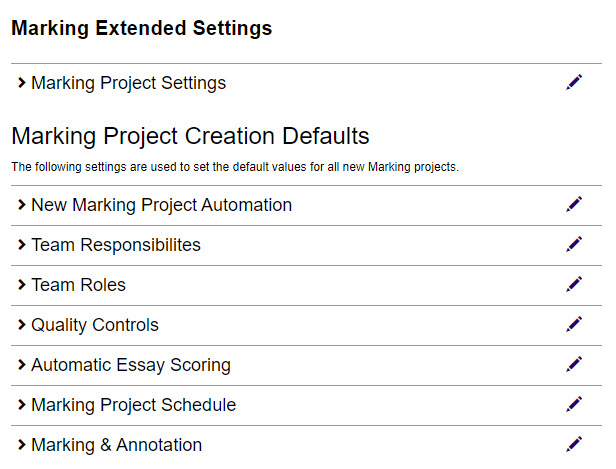
To view these, select each expandable section, or select the Edit icon to edit the appropriate setting.

This section allows you to configure the various settings for the marking project.
The various options and settings are displayed. You can select the ? icon next to any option to see more information about that option. To enable any of the options, select the Enabled checkbox next to that option. To disable an option, ensure the checkbox remains unchecked.

This section allows you to set the default values for automation of new marking projects.
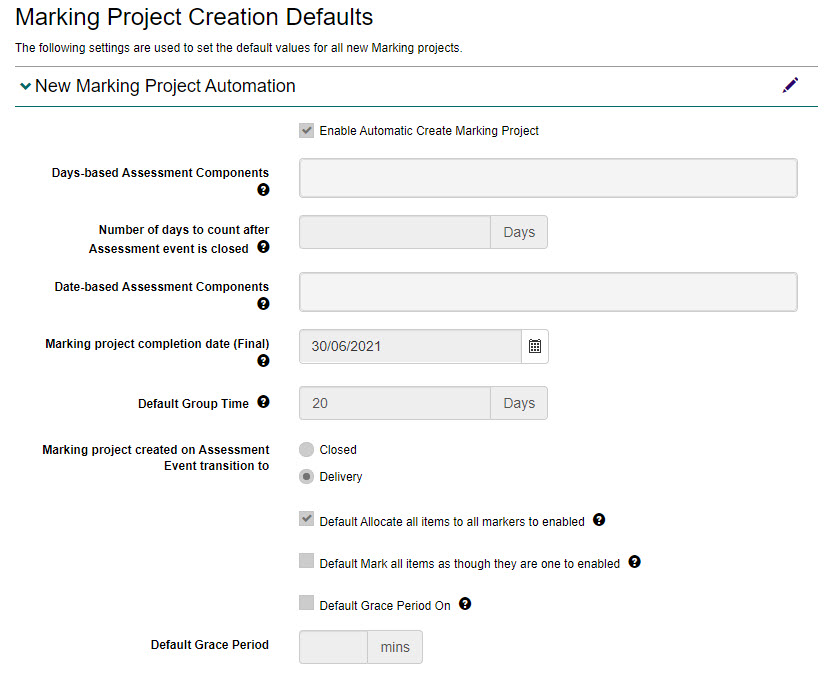
To enable the system to automatically create marking projects, ensure the Enable Automatic Create Marking Project checkbox is checked.

To select when the marking project is created, select either the Closed or Delivery option. This means the marking project will be automatically created when the assessment event is moved to the appropriate status. You can also select the other default marking behaviour around how marking is assigned and grace periods for Markers to change their scores.
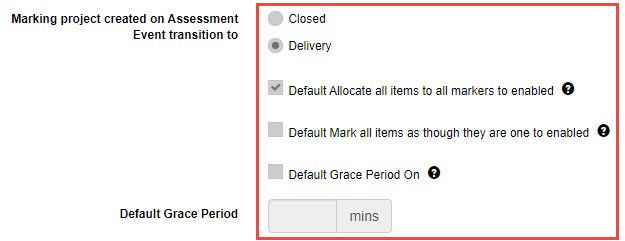
This section allows you to set the default values for marking activities each role will have the right to perform in new marking projects. This can be overridden in any marking project if required.
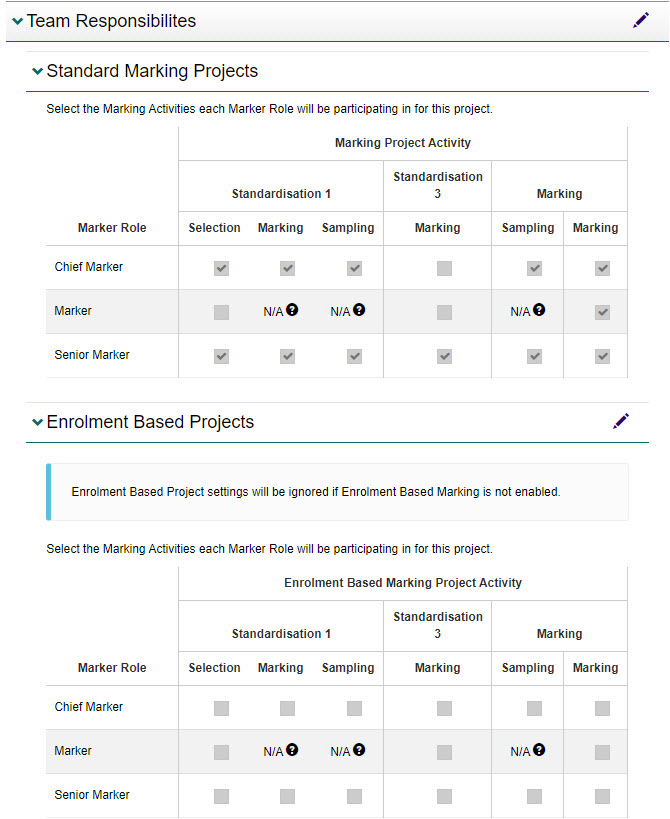
Important
In the above image, you can see the marking activities for standard marking projects and enrolment based projects. The enrolment based project settings will be ignored if enrolment based marking is not enabled.
This section allows you to set the default group types for marking centres and teams. Markers will need to be a member of these teams, or it will not be possible to add them to a marking project. You can also set the role responsible for administering the marking project.
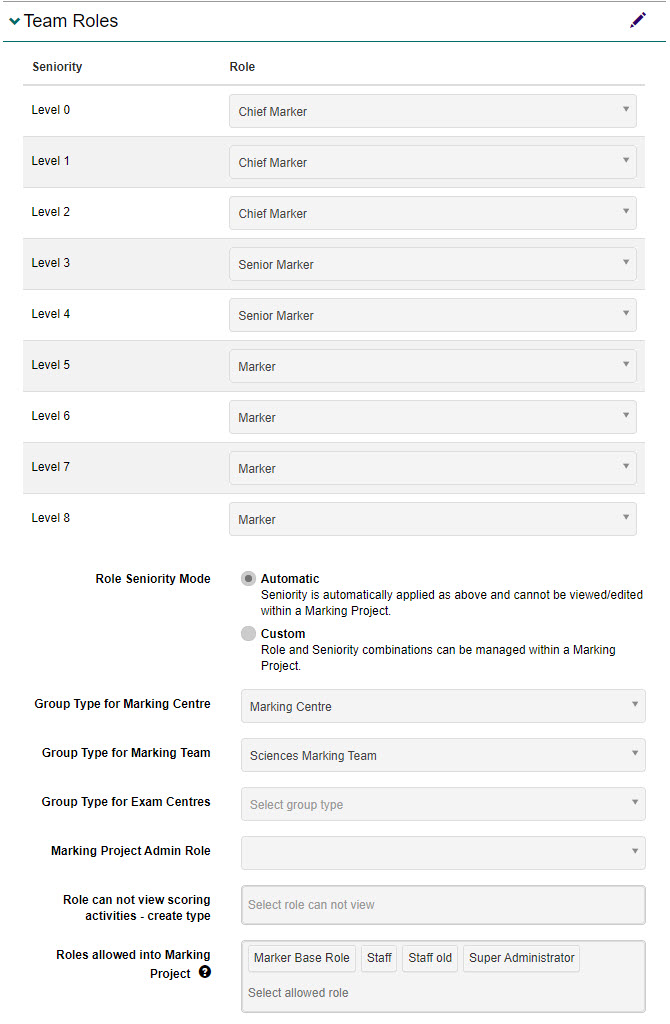
This section allows you to set the default quality control requirements for marking in regards to standardisation, sampling and double marking.
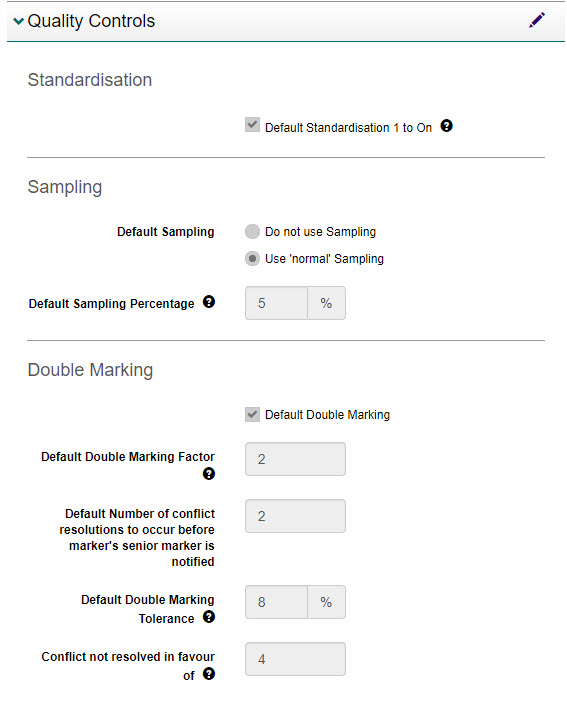
Two settings of note are:
| # | Setting | Description |
|---|---|---|
| A | Default Double Marking Tolerance | The value specified in this field sets the extent to which the double Markers can disagree on their scores. Any scores that exceed the tolerance will be flagged for review by the Senior Markers. |
| B | Conflict not resolved in favour of | The value specified in this field allows you to specify the number of scripts a Marker can mark for which a Senior Marker does not resolve in favour of the Marker when resolving the conflicts. Once a Marker reaches the value, the system will send a notification to the Senior Marker. |

This section allows you to provide a connection string for a third-party scoring service or enable an HTML substitution.
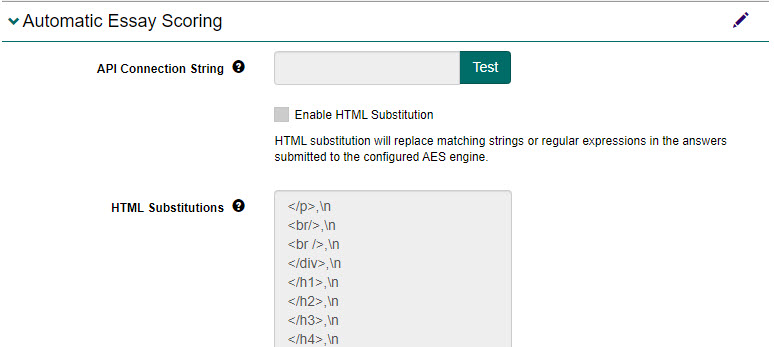
This section allows you to set the times available for each phase of the marking project. The system doesn’t enforce the values but provides an overview of the preferred or ideal timeframes.
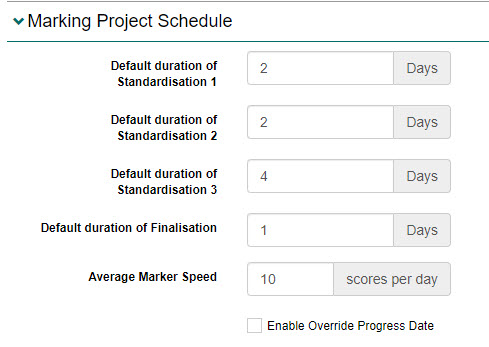
Tip
Marking times can be enforced using the settings in the Marking sessions schedule section on the Marking Project screen.
The system calculates the Marking Project Completion Date based on the start date plus the total number of days indicated in the marking project schedule.
This section allows you to create custom annotations which will be available to Markers for on-screen marking across all marking projects.
Tip
To learn more about configuring available annotation tools for an entire marking project or individual questions in a marking project, see the Marking and annotation settings section.

Review the on-screen instructions, then complete the following:
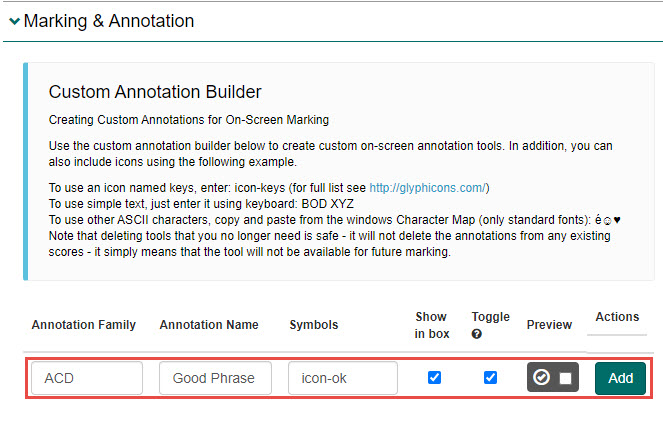
The icon will now be available in the marking projects.
Tip
Custom annotations can be enabled or disabled at a marking project level. To learn how to do this, see the Custom annotation tool settings section.
These settings can be accessed by selecting Marking in the Menu, then selecting Marking Settings.
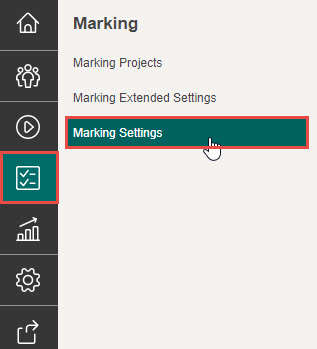
From here you have various options and settings.
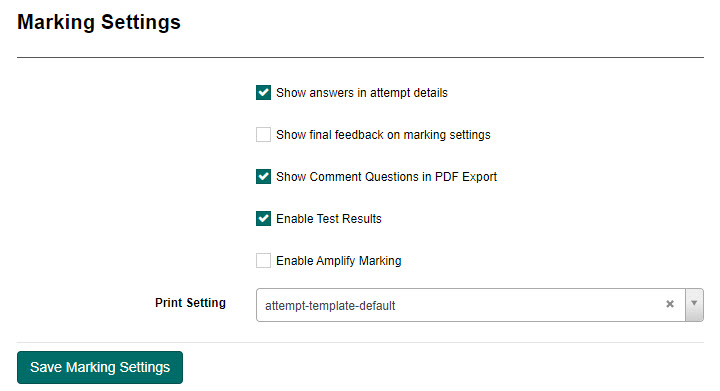
1300 857 687 (Australia)
+61 2 6652 9850 (International)
ACN 091 302 975
ABN 35 081 897 494
© 2024 Janison
Janison acknowledges the traditional owners of the land on which we work and meet. We acknowledge the continuous care of the land, animals and waterways. We pay our respects to Elders past, present and emerging.